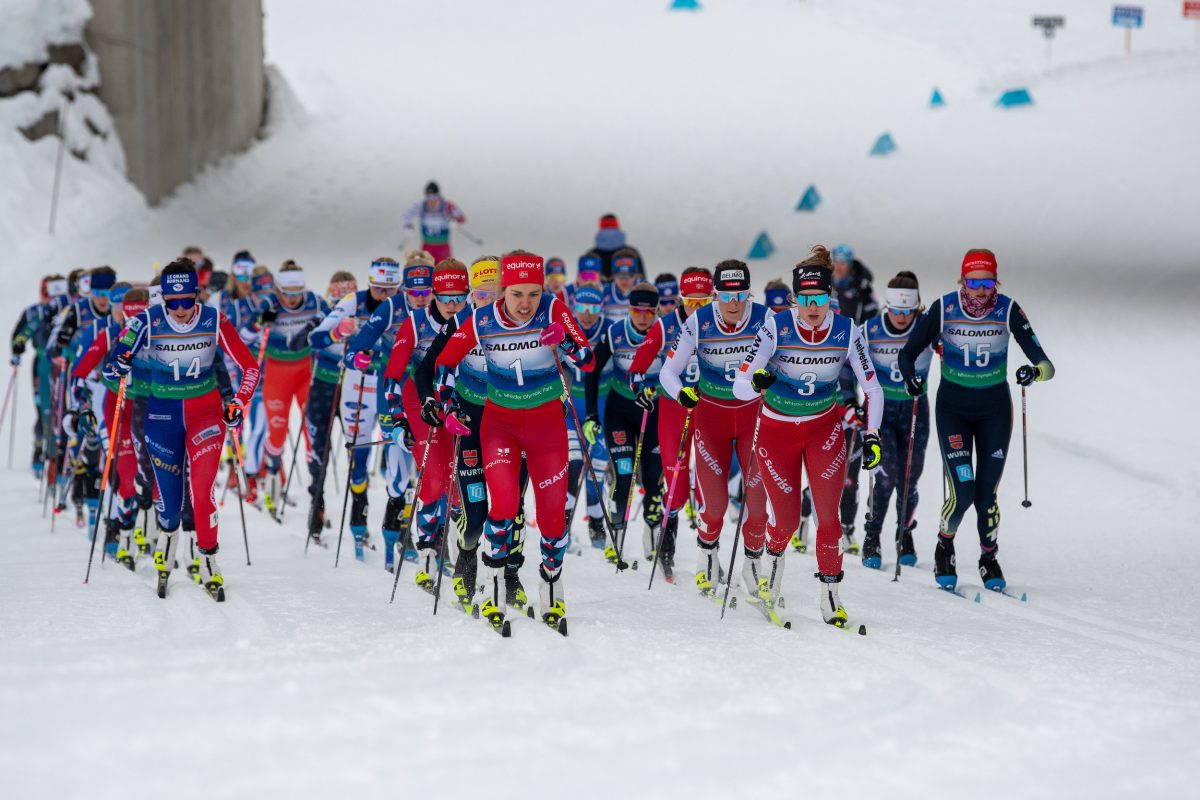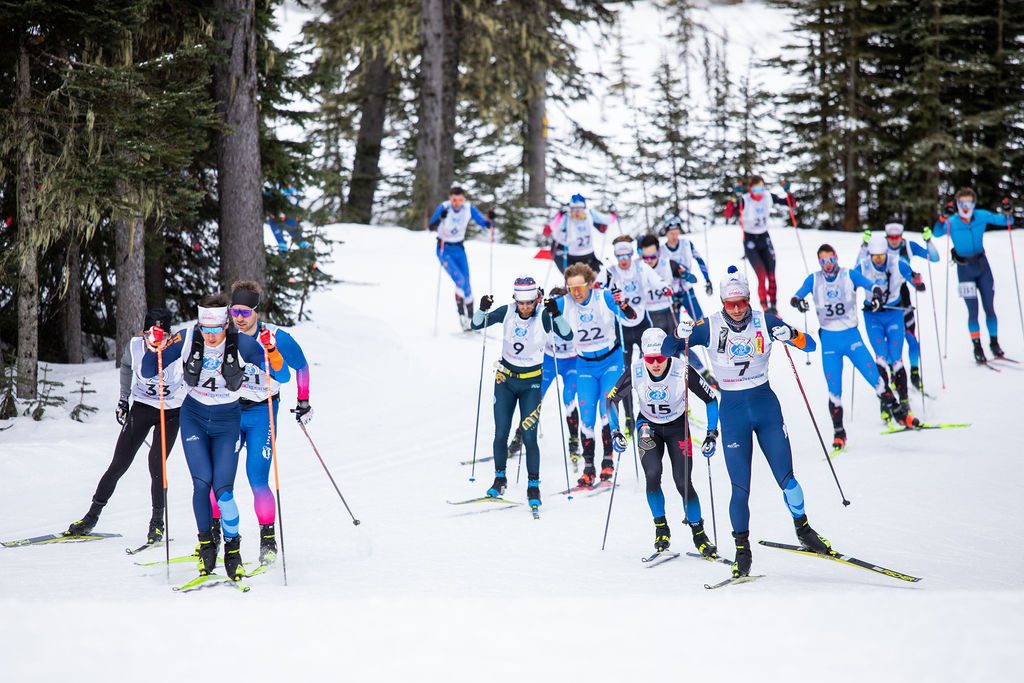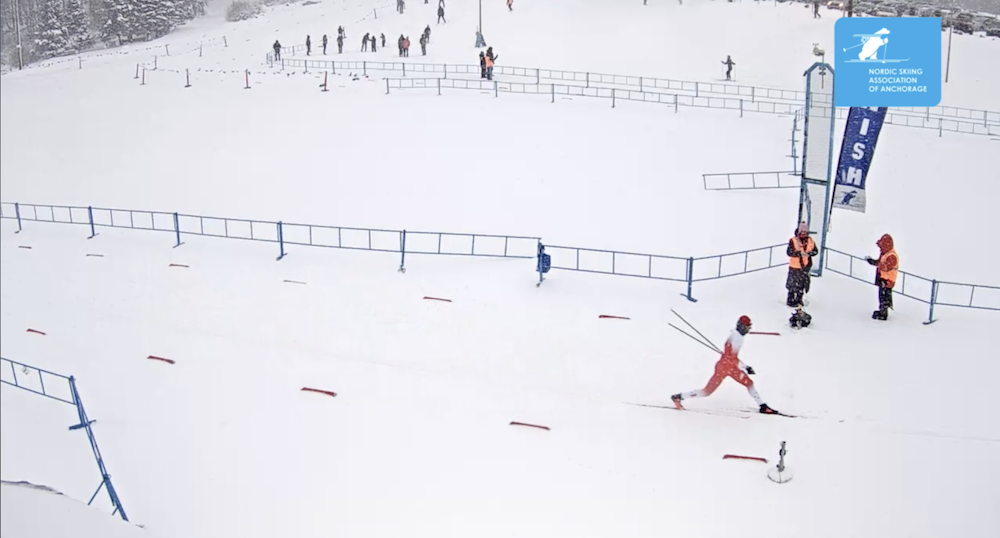
The winter of Covid continues. Most of the FIS races scheduled for this country this year did not happen. A few did. No one in Canada has done a single official high-level race this winter. No one in Vermont has, either. Some athletes from Canada and Vermont did not race and were chosen for international travel teams. Some athletes in Alaska raced a ton and were not. It’s been a tumultuous winter for everyone, for many reasons, skiing or otherwise.
After several months of hosting, or not hosting, ski races in this country, a few themes have emerged. In this article, part one in a two-part series, FasterSkier surveys some of the lessons learned and considerations informing race directors’ decisions about whether to hold a race, and if so with what safety measures in place. In part two, FasterSkier considers the case of the American Birkebeiner, which even in this year’s scaled-down format is once more poised to be the most popular ski race in the country, and to draw athletes from across a wide swath of the Midwest to rural Wisconsin.
This article begins with an attempt to quantify where the health risks in nordic skiing lie, then examines first regional racing in Alaska and then in portions of the Lower 48.
Methods of transmission
You’re doubtless familiar with the epidemiological basics by now: SARS-CoV-2, the novel coronavirus that causes the disease known as Covid-19, is largely spread through exposure to respiratory droplets carrying infectious virus, less so through touching fomites left on surfaces. Unventilated indoor spaces are, to paint in broad epidemiological strokes here, “bad”; outdoor spaces are “good.” From an outdoor recreation perspective, the message has been heeded; the rise in usage numbers for outdoor endurance sports over the past year has been well-documented, and you’ve very likely encountered crowded parking lots at your favorite trailhead in all seasons.
Early in the pandemic, the statement, “there have been no documented cases of outdoor transmission” was often repeated like an article of faith. This is, no longer, literally true. In Alaska alone, for example, the Alaska Department of Health and Social Services last summer documented cases of outdoor transmission among attendees of backyard barbecues and spectators at youth sporting events, perhaps where parents were relatively close to each other for extended periods.
As one scientist’s work in this area was summarized by FiveThirtyEight blog, “The situations he found where clusters were associated with outdoor transmission tended to be times when people were, as [the scientist] put it, ‘invited or required to break natural social distance.’ These event-specific behaviors might help explain why he found clusters associated with farmers’ markets, where people crowd around the stalls, but not with people just hanging out in the park.” Or, as another article summarizing the same research was headlined, “Catching coronavirus outside is rare but not impossible.” “Only about 10% of transmission events are linked to outdoor activities,” one lecturer in infectious diseases and medical virology recently told The Guardian.
So what does this mean for skiing? This reporter is no epidemiologist, but anecdata from the Anchorage cross-country ski community over the past several months suggest that the risk is relatively low. One unofficial case study comes from the Alaska Pacific University Elite Team, where Rosie Frankowski publicly announced in January that she had suffered from a mild case of Covid, and David Norris had it in November.
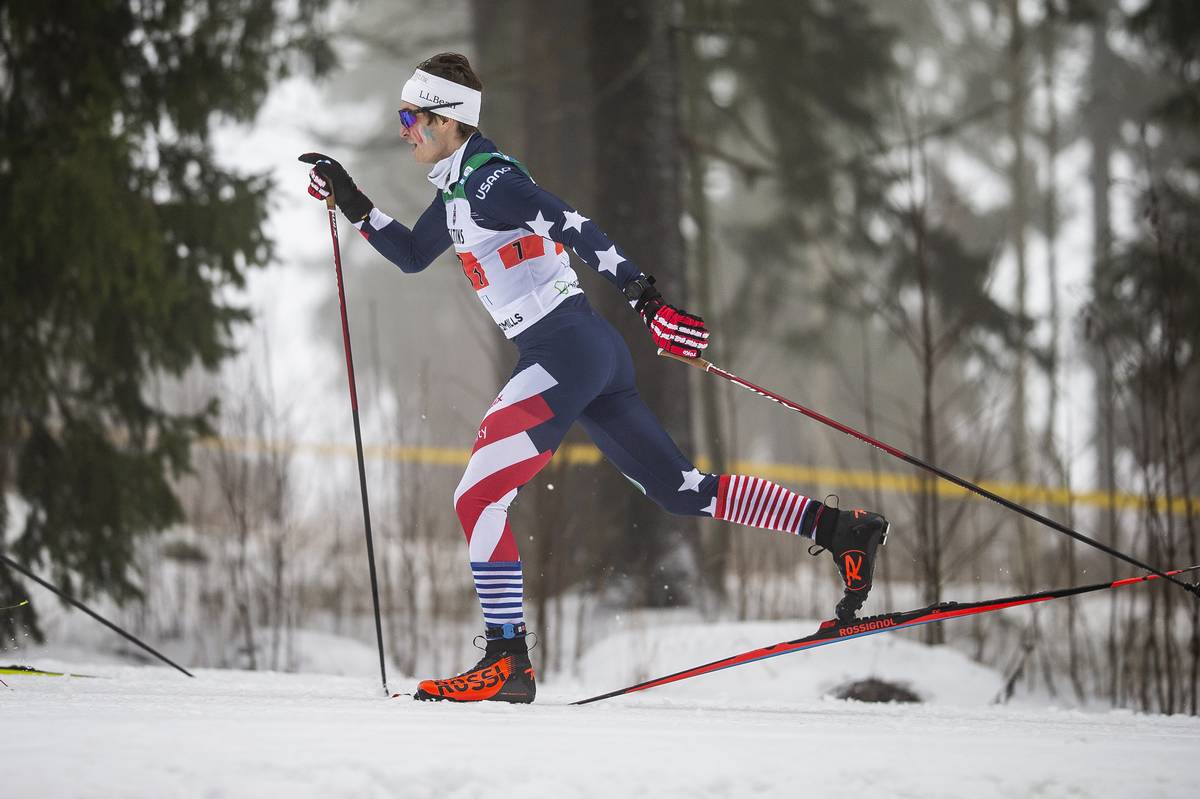
APU Head Coach Erik Flora told the Anchorage Daily News in January that all APU athletes who had caught the virus, four in total since the pandemic began, “were exposed somewhere other than training and there has been no internal spread among APU’s 30-member group.” (Most athletes on the APU Elite Team train together daily, most frequently men with men and women with women.)
In the specific case of Frankowski, meanwhile, Flora told the paper, “I skied with Rosie for a half-hour before she (tested positive). We did the proper spacing and when we weren’t skiing and all that good stuff, and I was negative. It made me really think how effective and important it is – the spacing and the mask-wearing.”
The experience of Anchorage School District (ASD) high school nordic teams suggests a similar conclusion. Although no ASD high school student has physically attended class since March 2020, many high school sports have proceeded with caution and new mitigation standards, including cross-country skiing. High school skiing in Anchorage is a big deal; the most popular teams can have over 100 athletes.
The ASD Nordic Ski Mitigation Plan states that athletes must maintain at least six feet of space at all times, and that “Face Coverings must be worn by Athletes.” (A separate provision in the same document states that “masks and face coverings during high intensity outdoor organized sports activities are encouraged, but not required, if athletes generally can maintain ten (10) feet physical distancing at all times,” tracking the language of the relevant municipal emergency order.)
Based on this reporter’s firsthand observations from local ski trails on weekday afternoons, there is a wide range of interpretations of this rule among Anchorage high school ski coaches and their teams. Some teams pass by with every single athlete wearing a mask, over both their nose and mouth. Some teams exhibit roughly half the athletes wearing a mask, with varying degrees of coverage of an athlete’s nose. Some teams present not a single athlete wearing a mask, with three athletes classic skiing side by side, or five or ten immediately behind one another in the tracks. As Rosie Brennan captioned a photo on her blog showing her racing in the middle of a train of skiers, “I hope no one has Covid…”
In late January, the Anchorage Daily News wrote that, although the district had “dealt with a number of team quarantines during the fall sports season” (at one point last fall at least five volleyball teams at three different schools were in quarantine), “none have occurred this winter.”

“We’ve not had any (team) quarantine situations thus far for skiing, basketball or cheer,” a district spokesperson told the paper. “We’ve had some isolated cases where an individual had to quarantine.” (Two weeks later, unmasked basketball practices would lead at least three large high schools to close in the nearby Matanuska-Susitna Borough School District, roughly an hour’s drive from Anchorage.)
FasterSkier has learned that some skiers on Anchorage High School ski teams tested positive for Covid-19. While it is unknown what mask-wearing practices were in place on the Anchorage ski teams that did experience cases – ASD representatives declined to identify to FasterSkier the teams involved or their safety procedures, citing student privacy concerns – the apparent lack of widespread intra-team transmission among nordic teams is anecdata that there is a relatively low risk associated with outdoor exercise.
(One person with direct knowledge of Anchorage high school skiing told FasterSkier something somewhat different, observing that they were personally aware of transmission occurring within ski teams, but noting that it occurred between students who carpooled together to practice. This would mean that the ASD administrator’s point about no within-team transmission is incorrect, but that points about the relative safety of outdoor exercise remain largely accurate.)
Other sports have suggested similar conclusions.
In football, for example, Sports Illustrated reported an NFL representative stating in early November, “We have seen zero evidence of transmission player-to-player on the field, either during games or practices, which I think is an important and powerful statement. And it also confirms what other sports leagues have found around the world. We regularly communicate with World Rugby, Australian rules football, European soccer leagues. To date, no one has documented a case of player-to-player transmission in a field sporting environment.”
(You may wish to take NFL pronouncements regarding player safety with a grain of salt, given the now undisputed evidence that the league ignored known risks regarding concussions and chronic traumatic encephalopathy for decades, and has exhibited a statistically improbable reporting distribution of positive Covid tests that as of late November had seen only two players placed on the reserve/Covid-19 list on a day his own team played, as against 171 players placed on the Covid list on non-game days.
“Somehow,” Kelsey McKinney wrote for Defector, summarizing this data, “every week, players are taking COVID-19 tests on Saturday and not being placed on the list (be it for positive tests or close contact) on Sunday. By Monday, they need to be on the list. Someone with a conspiratorial mind might take that as evidence that the league is pulling some number of strings to make sure that the Saturday tests are being administered in some way so as to ensure their results won’t endanger the next day’s games.”
The other sports leagues cited above have less of a checkered past in this regard.)
NFL representatives suggested to Sports Illustrated that more high-risk contacts occurred from “meeting, eating, and greeting” – that is, team meetings; eating together; and “when I say greeting, what I mean by that is social activity outside the building, people hanging out together doing things.” The last of these, extracurricular social activity, seems to be the greatest issue in the recreational ski context. Traveling for races raises the possibility of the second, as athletes have to eat somewhere. As for the first, local race organizers have consistently moved to Zoom for pre-race meetings this season, while the World Cup has featured memorable images of outdoor team meetings in single-digit temperatures.
Ski racing in Anchorage: Mostly local fields
A pair of December races in Anchorage, the first FIS races held on the continent this winter, were largely responsive to these concerns. There were a suite of mitigation measures that are by this point likely familiar to most racers: interval-start format; masks required up to the starting line and immediately upon crossing the finish line; paper bibs distributed by club coaches; no indoor facilities; leave the venue right after the race; spectators officially barred; etc.
The fidelity to the application of these measures was mixed. But rules were in place, and athletes likely had relatively little contact on course over a pair of interval-start races, at least while officially competing. (This reporter glimpsed multiple athletes from different teams skiing unmasked cooldowns together on trails away from the stadium. He also saw some spectators in the stadium, which violated both club policies and an official city emergency order in place at the time.)
So if the races themselves were presumptively fairly safe, was hosting them okay? Particularly when they had some of the best points profiles of any domestic races this season, and were held in a hotbed of American skiing? (At least nine athletes who were named to a 2021 World Juniors team competed in these races, and the results were used to help justify the discretion-based selection of at least five athletes to this year’s World Cup squad. Every Alaskan athlete who was named to an international team this year competed in these races, save for Gus Schumacher, who was already racing in Europe. Regarding these considerations, Caterinichio wrote to FasterSkier, “When you have an NRL race it isn’t only for points in fact points don’t mean much this year and there are no qualifications which has allowed a family to not have to come.”)
Opinions differ. Criticism about hosting the races focused on the fact of the races themselves, for the off-course behavior it could enable or incentivize, rather than any specific deficiency in safety measures on the part of Nordic Skiing Association of Anchorage, or NSAA.
As one local coach, granted anonymity to candidly discuss sensitive local issues within a small ski community, wrote to FasterSkier in late December, “I disagree with hosting any form of race right now in Alaska, including town series races. I do not doubt the efforts or the effectiveness of race day mitigation plans which are data driven and based on those designed by healthcare professionals. The issue is people’s ability to adhere to those plans, and what they do outside the race venue. Skiing is a social sport and carpooling to the venue, waxing as a team, or even congratulating your teammates on their performance poses a very serious health risk to racers and their families. Lastly, incentivizing travel of any kind at this point in time is absolutely unacceptable.”

Or as John Estle, the longtime doyen of Fairbanks skiing, wrote to FasterSkier, “Between our first and second meetings [of the Nordic Ski Club of Fairbanks advisory committee, which includes three local physicians], a patient from Bethel was sent to Fairbanks Memorial Hospital (FMH), due to a lack of ICU beds for COVID-19 patients in Anchorage. That fact, in addition to a still-climbing daily rate of confirmed cases were decisive factors in the Advisory Committee’s recommendation, and the NSCF BOD’s decision, not to host the first FIS races of the 2020-21 season on November 21-22 as scheduled.
“The decision was motivated by the knowledge that were NSCF to host a FIS race, it would likely draw skiers from other parts of the state. It is clear that travel contributes to the spread of the coronavirus – the people who travel to a community outside their own not only expose themselves to many more people than would be the case if they stayed home, but potentially could unknowingly (approximately 40% of coronavirus infections are asymptomatic) increase exposure to coronavirus among residents of the host community. In addition to the concern regarding travel, not holding the races would eliminate the possibility of members of our race crew being exposed to the virus.”
Estle continued, “I believe that it is possible for clubs to provide opportunities for competition during this pandemic which limit exposure of competitors, volunteers and officials in meaningful and effective ways. I believe the spectrum of formats where this can occur is fairly broad, but I believe a key component of safe competitions is that they be LOCAL in nature. I do not believe it is wise to organize an event which creates an incentive for people to travel from one geographic area to a fairly distant geographic area, thus increasing exposure both among the visitors and the hosts.”
He also noted, “One issue that I have not even mentioned is the risk to both the short-term and long-term health of young athletes. Although research is ongoing in this area, it is clear that young athletes who contract COVID-19, even those who have had only mild cases, can suffer long-term respiratory and cardiac issues post-COVID. I don’t advocate that young athletes abandon exercise and sit at home. However, it seems to me that concern for the health of young athletes would dictate that competitive opportunities make sense when they are offered within a structure which does nothing to INCREASE the exposure of the participants.”

When Estle, and the NSCF board, decided to cancel the November FIS races, the average daily rate of Covid cases in Fairbanks over 14 days was 40 cases per 100,000. When the decision was announced on December 8 that the Anchorage races were going ahead, albeit with statewide participation discouraged, the rate in Anchorage was 90 per 100,000.
(Both rates are substantially lower now, 12.4 cases per 100,000 for Fairbanks and 14.5 per 100,000 for Anchorage as of February 16. This is, however, all quite relative; when Norway announced the cancellation of all remaining World Cup races in the country earlier this month, its rate was roughly 5 cases per 100,000, although Norway was also concerned with the emergence of new variants in addition to absolute case numbers.)
When asked about a difference between the two cities that could justify holding a race amidst the higher case numbers present in Anchorage, Caterinichio wrote, “A difference from Fairbanks vs Anchorage, could be that we have been running multiple events since June in Anchorage and we have had a mask mandate where other cities do not to include at our outdoor events. The experience of having multiple mitigated events and having the races removed from state-wide to local emphasis. The majority of the athletes live in Anchorage so travel to Anchorage is minimal where Fairbanks, more people would be traveling.”
The Anchorage case rate of 90 cases per 100,000 in early December came at a time of significantly reduced local hospital capacity. There were between two and four ICU beds available in Anchorage, out of 73 total, throughout the week leading up to the races, for a city of 300,000, potentially also for any rural area that would hope to medevac patients to Anchorage. A mobile morgue was parked outside of Anchorage’s Providence hospital, the largest hospital in the state.
The rate of 90 cases per 100,000 was over three times greater than the threshold of 25 cases per 100,000, defined by U.S. Ski & Snowboard as “high community spread,” which triggers a USSS recommendation that a race organizer should “speak with your local health authority regarding ICU bed utilization and ventilator availability in the location’s level 1 medical center catchment” and that decision-making be guided by “whether or not pre-competition COVID-19 testing and asymptotic [sic] COVID-19 screening during the competition are being conducted.”
The Anchorage races featured a series of self-assessment questions generally designed to screen for asymptomatic cases. It did not conduct formal Covid testing, as occurs on the World Cup. As noted, ICU bed availability was at two to four beds out of 73 for the entire city. In Southern California the same day, a drop of ICU beds to below 2% capacity led health officials to turn to “increasingly desperate measures to prevent the state’s coronavirus surge from killing more patients,” the Los Angeles Times reported. Anchorage was within one additional ICU bed occupancy of reaching this level.
When asked about any conversations with local health care authorities per the USSS recommendations, Caterinichio initially wrote, “I would hope that no person would be putting on an event in their city without permission from the local authorities. I also served on the USSS committee as the mitigation efforts and suggestions were being rolled out so I am aware of the suggestions.”
In a follow-up conversation, Caterinichio stated that she had worked with the Alaska Department of Health and Human Services, and had worked directly with Municipality of Anchorage representatives. She cited her professional experience running a medical business that is accredited by Medicare – she owns a home health care and hospital distribution company of medical and orthopedic products – as giving her experience in implementing a standard operating procedure to ensure health and safety. “We have procedures on how to clean equipment, whether it’s infectious disease, how to treat patients, so we never stopped our business,” Caterinichio told FasterSkier.
Caterinichio discussed the sporting events that she had been involved in hosting for several months now at the time of the December races, including swim meets and cross-country running. She said, of these events, “When you follow your mitigation plan, and you follow the CDC guidelines and your state guidelines, you realize that you can do it safely. It’s never a percentage of zero, but your goal is zero. If for any reason somebody did get it, the goal is not to have a spread. And I did, I will say there was, in some of my events one or two people that would end up positive weeks later, but there would be no spread.”
Caterinichio expressed her belief that there had been very little travel within the state of Alaska for these races. In advance of the race weekend, she wrote to FasterSkier that there were four entrants coming down from Fairbanks for the races. However, at the time of that estimate, race registration had not closed.
FasterSkier’s review of the results sheet from Sunday’s distance skate event suggests that finishers included eight athletes from University of Alaska Fairbanks and two additional athletes from Fairbanks, plus two athletes from Colony High School, one from Palmer, one from Soldotna, one from Kenai, and one who listed a local club but who had flown up from Outside shortly before the race. Some of these athletes were listed on the results sheet with team affiliations that could potentially be interpreted as concealing a location outside of Anchorage, such as listing an Anchorage-based club despite attending school in Fairbanks or simply leaving team affiliation blank.
Ski racing Outside: Regional fields drawn from several states
As the comparison between Anchorage and Fairbanks illustrates, even relatively nearby regions of this sprawling country can have divergent case numbers, public health regulations, and/or hospital capacity, by virtue of being in different jurisdictions at the state/county/city level.
The 2021 Alaska high school state nordic skiing championships, to be held later this week, are an instructive case study: They may not be held in Anchorage without requiring pre-competition Covid testing for all participants. They were ultimately instead moved to Government Peak Recreation Area, or GPRA, about an hour’s drive away in Palmer. Government Peak is a world-class venue, and the Mat-Su Ski Club has careful and conscientious volunteers – but the GPRA stadium, parking lots, and associated infrastructure are simply far smaller than those at Anchorage’s Kincaid Park, leaving less space for everyone at a venue that will draw hundreds of people over three days. As Caterinichio told the Anchorage Daily News earlier this month, addressing municipal organized sports requirements then in place, “We do want to host the state meet at Kincaid. It’s one of the safest venues and our crew is probably the most tenured as far as putting on a mitigated meet. Unfortunately, this particular event would have to move for it to happen.”
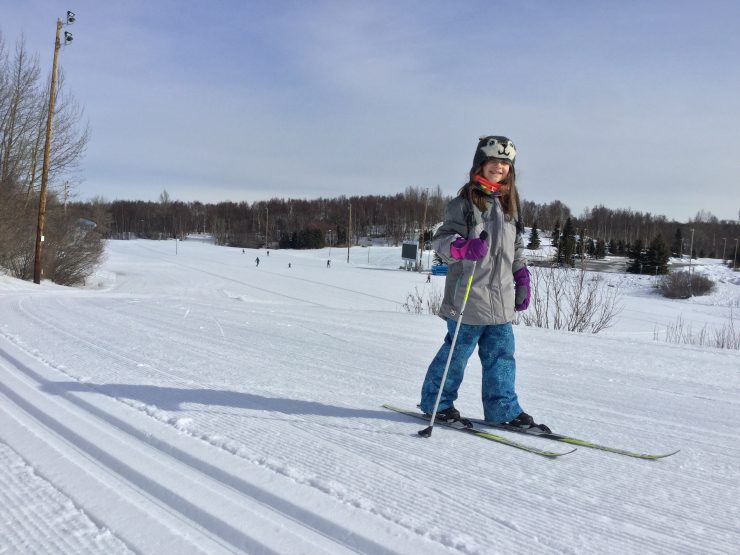
Some people involved with high school skiing have raised to FasterSkier the specter of teams potentially carpooling from Anchorage out to the Valley, roughly an hour’s drive away. Indeed, the official state meet information form from the Mat-Su Ski Club states, “There will be no indoor facilities for teams. … If all athletes [from a school] are brought up to the venue via bus, athletes will need to use the bus as their warming area.” Moreover, travelling itself has some potential risk, as witness the athlete or athletes who contracted Covid while en route from this country to Finland for 2021 World Juniors, or Estle’s comments on this subject to FasterSkier.
(The Mat-Su Valley has consistently had laxer regulations than the adjoining Municipality of Anchorage, and for nearly a year now has hosted events that were barred in Anchorage. This past weekend saw a statewide indoor hockey tournament in the same jurisdiction, despite the documented health risks of such an activity. Multiple statewide high school basketball tournaments are following suit in Valley gyms. The current case rate in the Mat-Su Borough, 36.4 cases per 100,000, is 2.5 times that of Anchorage, and nearly 3 times that of Fairbanks. It is, by a substantial margin, the highest case rate of any region of the state on the road system.)
The Lower 48 has also exhibited the patchwork effect of different regulations in different jurisdictions. In the Midwest, for example, hundreds of athletes from around the region raced in Houghton, Michigan, in early January, including many from Minnesota – at a time when gathering for group exercise was barred in Minnesota, and high school ski teams could not hold even outdoor practices. Regardless of which state’s policy was “right,” they were clearly quite different.
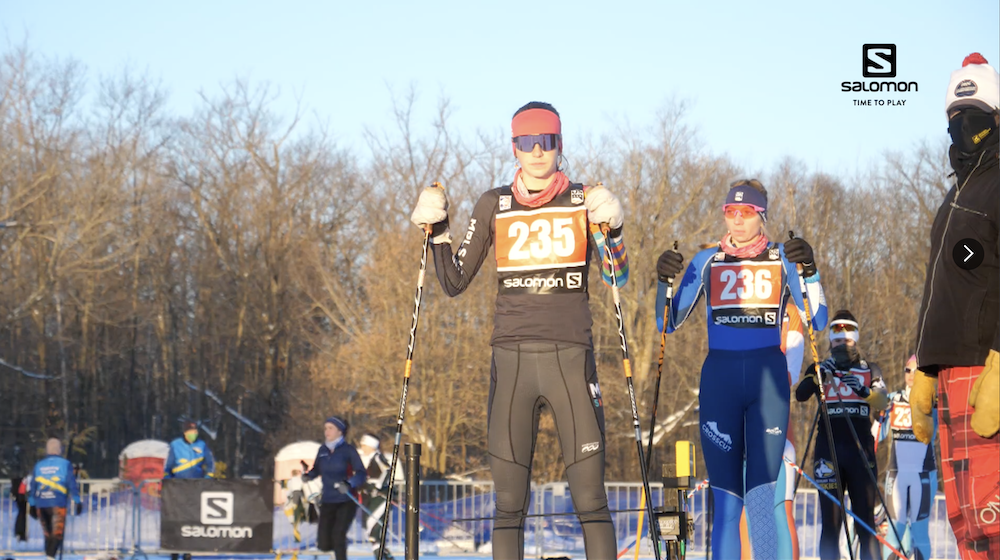
Underscoring the incentives involved with competitive races and team naming opportunities for aspiring young skiers, which even in this year could lead skiers to seek out high-level racing opportunities, not a single athlete racing in Houghton in early January qualified for World Juniors. The sole Midwestern athlete among the 30 skiers named to this year’s World Juniors/U23 teams “made the drive to Utah to take advantage of an opportunity to race” that weekend, SkinnySki wrote. She told SkinnySki, “the conditions were absolutely beautiful and I was happy with how well organized and Covid-safe the race was.”
Perhaps also relevant, her 8th-place finish in Soho was good for USSA points of, in round numbers, 100, with a race penalty for the winner of 54. Eighth place in Houghton was a 121-point USSA result, with a race penalty of 63. Lower numbers are better, i.e., the Utah race had a more competitive field. The math may become particularly persuasive when presenting oneself as a domestic skier seeking discretionary start rights for European racing.
(Caitlin Gregg, who won both Houghton races, was later given a World Cup start on the basis of “dominating competition in the Midwest and with her points profile from last season,” the Loppet Foundation wrote, though the Nové Město races were subsequently cancelled.)
Later in the month, hundreds of athletes raced at Soldier Hollow in mid-January. The event was still called a “Super JNQ” – critics alleged that it was potentially rather a “superspreader JNQ” – even though there are no Junior National teams to qualify for this year. Athletes travelled broadly from throughout the American West for these races, with clubs based in Utah, Idaho, Montana, Colorado, Oregon, Wyoming, Washington, and California, plus Ontario, Canada, among others, represented in the results. (Athletes from multiple RMISA schools also competed, so add Alaska to the list.)
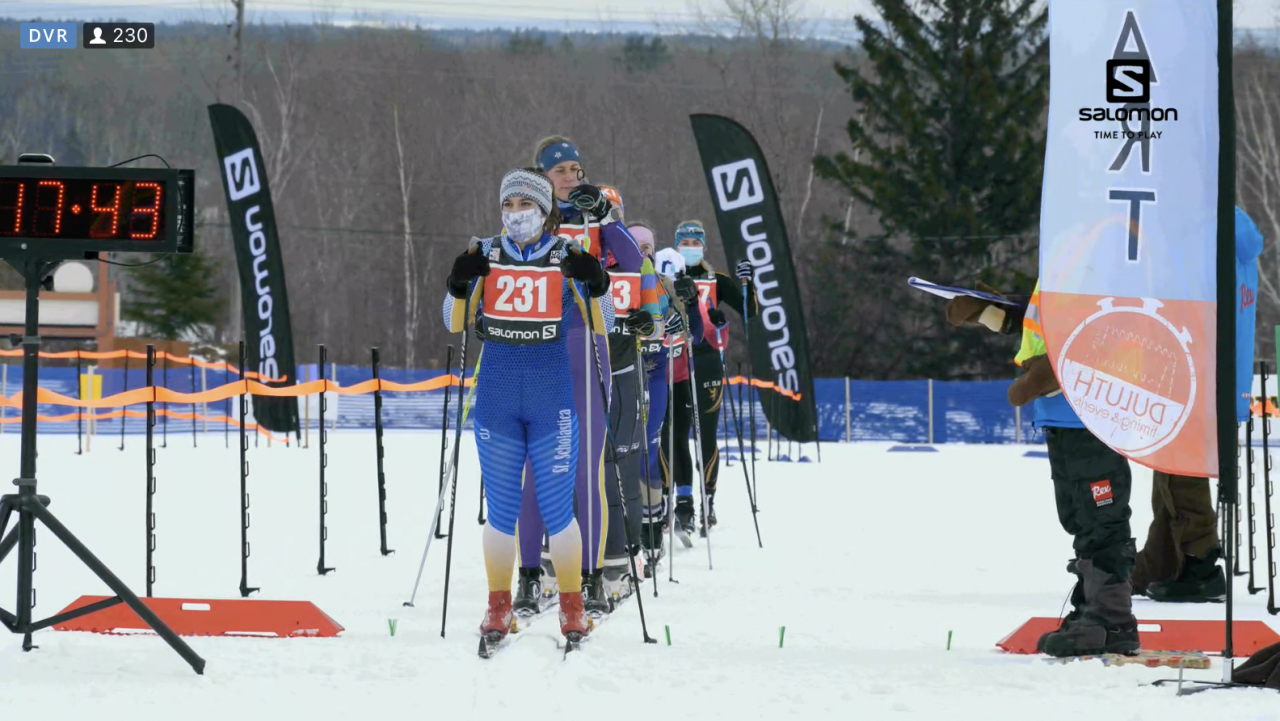
And the following weekend, Minnesota, just a few weeks removed from a full-on bar on group outdoor exercise, was holding mass start racing at the Skinnyski Santa Solstice Race outside of Minneapolis.
Meanwhile, the high school racing season continued in Anchorage with a steady stream of interval-start races, a decision mirrored in all Anchorage citizen’s races. The racing season in the Midwest proceeded in fits and starts, as different states cycled through different regulations, sometimes with interval-start races and sometimes with wave starts. In Vermont, athletes spent weeks doing unofficial time trials. For not the first time in this pandemic, different states’ restrictions led to different case numbers and different levels of permitted activity.
So, what about the Birkie?
Part two of this article series, coming soon, will examine the American Birkebeiner, and some of the considerations that have gone into the decision to go ahead with this year’s race, albeit in a significantly modified form. FasterSkier will set forth its interview with the race’s executive director, Ben Popp, in advance of the country’s largest ski race(s), currently scheduled to occur over five days starting on this Wednesday.
Gavin Kentch
Gavin Kentch wrote for FasterSkier from 2016–2022. He has a cat named Marit.

